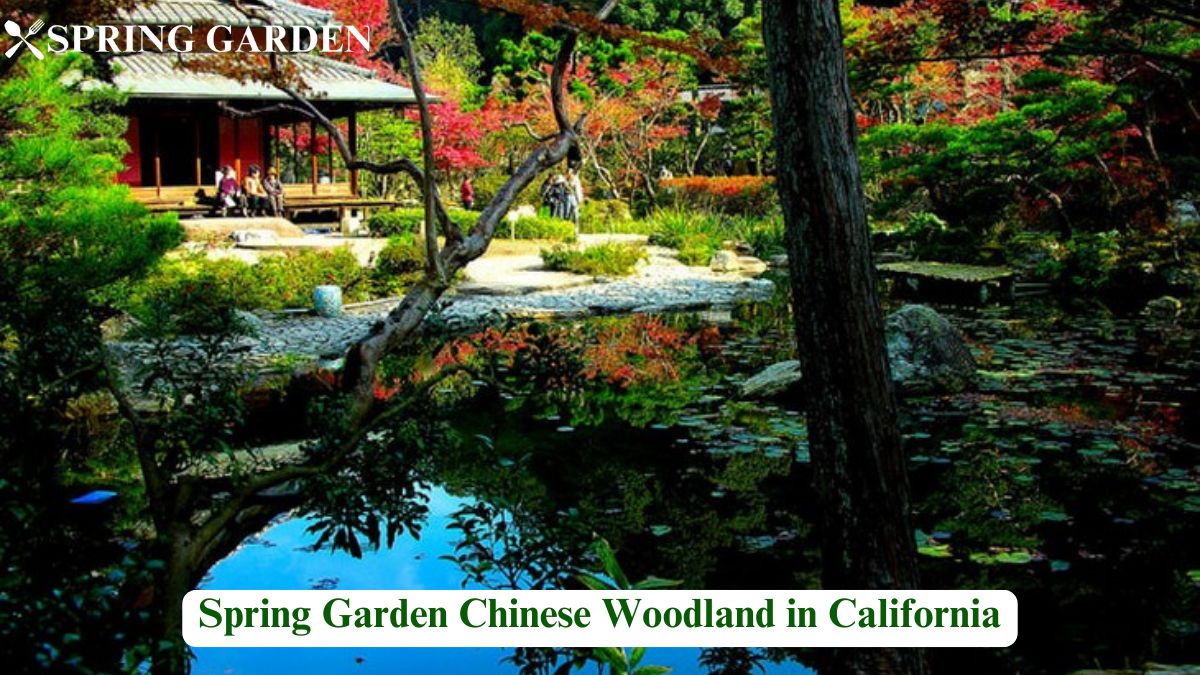Hidden in the heart of California lies a serene retreat: Spring Garden, a Chinese woodland that brings the elegance of classical Chinese gardens to the West. With lush flora, tranquil water features, and centuries-old design principles, this garden offers visitors a peaceful escape steeped in cultural heritage.
This article explores the history, philosophy, plant life, and unique elements that make Spring Garden a must-visit destination. Whether you’re a garden enthusiast, a nature lover, or someone seeking tranquillity, this comprehensive guide will walk you through everything you need to know.
The Origins of Spring Garden
Historical Inspiration
Chinese gardens date back over 3,000 years, drawing influence from Taoist, Buddhist, and Confucian philosophies. Classical gardens from Suzhou and Hangzhou served as blueprints for traditional landscape designs.
- Philosophy: The goal is to mimic nature on a smaller scale, creating an idealized landscape.
- Aesthetics: Elements like rocks, water, and pavilions reflect a balance between human life and the natural world.
- Symbolism: Many garden features represent longevity, peace, and prosperity.
Founding of Spring Garden
Spring Garden was established by a team of horticulturalists, landscape architects, and historians aiming to recreate an authentic Chinese woodland in California.
- Location: Nestled in a temperate zone, the garden flourishes despite California’s dry climate.
- Vision: To create a space that educates visitors about traditional Chinese landscaping while offering a meditative retreat.
- Key Contributors: Experts from both China and the U.S. collaborated to design this unique sanctuary.
Integration into California’s Landscape
Blending Chinese gardening traditions with California’s native ecosystem was a challenge.
- Drought-resistant species were chosen to complement imported flora.
- Irrigation methods adapted to local weather conditions.
- The garden remains sustainable without losing authenticity.
The Philosophy of Chinese Gardens
Harmony with Nature
Unlike Western gardens, Chinese landscapes prioritize natural flow rather than rigid symmetry. They mirror wild landscapes rather than controlling them.
- Principle of Yin and Yang: Balance between light and dark, hard and soft elements.
- Pathways & Structures: Curved paths encourage wandering and reflection.
- Human Connection: Spaces are designed for meditation, art, and poetry.
Symbolism in Design
Each feature in a Chinese garden has meaning.
| Feature | Symbolism |
| Water | Life and renewal |
| Rocks | Stability and endurance |
| Bridges | Transition between realms |
| Moon Gates | Passage to enlightenment |
Contrast with Western Gardens
Western gardens tend to follow strict geometric patterns, while Chinese gardens focus on asymmetry and spontaneity.
- Western: Symmetry, trimmed hedges, and controlled floral displays.
- Chinese: Natural flow, uneven terrain, and organic plant arrangements.
- Experience: Western gardens invite admiration; Chinese gardens invite contemplation.
Seasonal Beauty: Spring in the Garden
Blooming Highlights
Spring is the most breathtaking season in the garden.
- Cherry Blossoms: A symbol of beauty and transience.
- Peonies: Represent wealth and prosperity.
- Camellias & Magnolias: Known for their fragrance and elegance.
Wildlife and Ecosystem
The Spring Garden isn’t just about plants—it’s a thriving ecosystem.
- Birds like nightingales and swallows.
- Butterflies attracted to flowering shrubs.
- Koi fish add movement and symbolism to ponds.
Environmental Adaptations
- Shade trees protect delicate flora.
- Natural windbreaks created with bamboo and pines.
- Water conservation techniques help maintain the garden year-round.
Key Features of Spring Garden
Traditional Architecture
The garden incorporates traditional Chinese structures, including:
- Pavilions: Spaces for reflection and socializing.
- Moon Gates: Circular doorways representing wholeness.
- Bridges: Often zig-zagged to confuse evil spirits.
Water Elements
Water is a crucial part of the garden’s landscape.
- Lakes and Ponds: Provide balance and serenity.
- Waterfalls: Symbolize movement and energy.
- Lotus Ponds: Represent purity in Buddhist traditions.
Rock Formations
Rocks are carefully selected and placed to reflect natural landscapes.
- Taihu Rocks: Limestone formations with porous surfaces.
- Artificial Hills: Mimic mountain scenery.
- Stepping Stones: Guide visitors through the space.
The Garden as a Retreat: A Visitor’s Guide
Best Times to Visit
Spring is the most picturesque time, but each season has its charm:
- Spring: Blooming flowers and vibrant colors.
- Summer: Lush greenery and cool shaded spots.
- Fall: Maple trees turn fiery red.
- Winter: Snow-dusted pavilions create a peaceful scene.
Photography Tips
- Capture reflections in water.
- Use natural frames like moon gates.
- Visit at sunrise or sunset for soft lighting.
Accessibility & Amenities
- Guided Tours: Available for deeper insight.
- Tea Houses: Experience authentic Chinese tea culture.
- Workshops: Calligraphy, painting, and gardening lessons.
FAQs
Where is Spring Garden located?
Spring Garden is in California, designed to replicate a traditional Chinese woodland.
Is there an entrance fee?
Fees vary; check the official website for updated pricing.
What are the best times to visit?
Spring and autumn offer the most vibrant scenery.
Are pets allowed?
No, to preserve the delicate ecosystem.
Can I host events in the garden?
Yes, private events and weddings are allowed.
Are guided tours available?
Yes, expert guides provide insight into the garden’s history.
What plants are unique to the garden?
Rare species include Taihu rock formations, lotus, and peonies.
Is the garden wheelchair accessible?
Yes, with designated paths and ramps.
Can I bring food inside?
Outside food is not permitted, but there are tea houses available.
How can I support the garden?
Visitors can donate or become members to help with conservation efforts.
Conclusion
Spring Garden is more than just a collection of plants and structures—it is a living piece of art, embodying centuries-old Chinese traditions. Whether you visit for relaxation, photography, or cultural appreciation, this garden offers an unforgettable experience. Plan your visit today and immerse yourself in the timeless beauty of a Chinese woodland in California.

